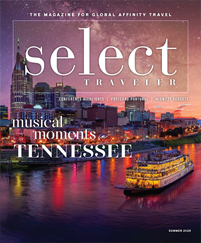Milwaukee is a city of many monikers.
Some call it the Cream City, a reference to the pale-yellow clay bricks used to construct many of its buildings. Others know it as Brew City, thanks to its strong ties to beer brewing. Its location on Lake Michigan’s shores inspired the nickname the Third Coast.
No matter what you call Milwaukee, its eclectic essence is expertly captured by its museums, which highlight its history, architecture, industry, culture—even its beer. Here are five signature museums to explore.
Milwaukee Art Museum
With over 30,000 works, the Milwaukee Art Museum is the state’s largest repository of art. In the world of art, it’s known for having the largest collection of Haitian art outside of Haiti, a large collection of Georgia O’Keeffe’s works, folk art and early examples of photography. The lakefront museum’s unusual architecture also turns heads.
“The Milwaukee Art Museum in some form or fashion has been around since the 1880s,” said Claire Koenig, senior director of communications at Visit Milwaukee. “Most people know it today for the sculptural addition which opened in 2001 and added movable ‘wings’ that open and shut every day.”
The building’s “wings” are really a moveable sunscreen with a 217-foot wingspan known as the Burke Brise Soleil, designed by Spanish architect Santiago Calatrava. Other design highlights are the 90-foot glass ceiling in Windhover Hall and a pedestrian suspension bridge.
Docent-led or self-guided tours can encompass four floors of permanent and special collections that include works by Claude Monet, Andy Warhol and other noted artists as well as collections from cultures around the world. The museum café has lake views, baked goods and quick entrees, and in good weather, a patio for outdoor dining.
Harley-Davidson Museum
The name Harley-Davidson holds a special place in America’s heart. The company got its start in Milwaukee in 1903 and was one of only two major motorcycle manufacturers to survive the Great Depression. Now synonymous with the feeling of the open road, Harley-Davidson’s loyal following of motorcycle enthusiasts are naturally drawn to the Harley-Davidson Museum, but the museum’s appeal is broad. It is an iconic stop on a Milwaukee group tour.
“It’s like different slices of pop culture and different slices of history,” Koenig said. “You’re kind of learning about so many parts of the American story through the lens of this vehicle and the family that built it and the city where it was born. “
With exhibits that detail everything from the history of the motorcycle and the leather jacket to motorcycles in Hollywood, visitors can spend half a day exploring the sizeable collection. There are customized bikes, early models of Harley-Davidson bikes and other notable bikes including the Tsunami Bike, a Harley that washed up on the shores of Japan after the 2011 tsunami.
Tours can be guided or self-guided. The museum’s Motor Bar and Restaurant offers hearty American classics like burgers and barbecue. And no visit is complete without a stop in the museum’s two massive retail stores.
Pabst Mansion
The Pabst name combines beer and architecture. And in a city famous for both, a trip to the Pabst Mansion is a must.
The elaborate mansion was built by Captain Frederick Pabst, the steamship captain-turned-brewer who owned Pabst Brewing Company, maker of the widely known Pabst Blue Ribbon (PBR) beer. Pabst spared no expense to build the mansion, and today tourists can marvel at the intricate millwork, expansive collection of vintage art and furniture, and ornamental crown molding throughout the home.
“The exterior is Flemish-Renaissance Style, and the interior is an amalgamation of all these design styles that were popular in the late 1800s when it was built,” Koenig said.
Specialty group tours are a fun option. A beer-themed, Blue Ribbon Happy Hour Tour includes a PBR toast to the Captain; an architecture tour delves into the mansion’s design and construction. There is also a tour of the Pabsts’ art collection; a Women of the Pabst Mansion tour; and a classic guided tour that focuses on the mansion’s history. Each tour can be upgraded with a mimosa or PBR toast. The mansion is also fully accessible, an unusual perk for a 131-year-old building.
North Point Lighthouse and Museum
Another example of Milwaukee architecture is the North Point Lighthouse and Museum. The first lighthouse was built in 1855 on a bluff overlooking Lake Michigan, and structural additions in 1888 and 1912 made the lighthouse taller and better able to combat erosion. The original 1855 lantern room is part of the new tower, making it one of the most historic places in the city.
At the museum, located in the lightkeeper’s cottage next to the lighthouse, groups can hear stories of the lighthouse’s past keepers, see artifacts from shipwrecks off the shoreline and examine a pictorial timeline of the lighthouse’s history. Tours can be self-guided or guided, and arrangements can be made for talks by experts.
“You get to see the house, which is a Queen Anne-style house where the lightkeeper lived; you can go up into the 74-foot tower,” Koenig said. “It’s one of the oldest structures we’ve got.”
After climbing the lighthouse for views of the lake, groups take a short walk through Lake Park to dine at Bartolotta Lake Park Bistro, where French cuisine, steaks and seafood are served in a cozy atmosphere looking out on Lake Michigan.
Discovery World
Also on the lakefront, Discovery World is a science and technology museum that ignites a passion for learning in patrons of all ages. The museum’s current home was built in 2006 and takes in plenty of natural light from its spot on the shoreline.
Educational exhibits are playful and often use immersive technology like flight simulation and virtual reality to teach visitors about Milwaukee and Lake Michigan. In the Technology Building, a model railroad depicts Milwaukee in the mid-20th century. Other interactive exhibits explore music, optical illusions, physics, design and technology.
Exhibits in the Aquatarium Building include an interactive model of the Great Lakes and chances to see and touch marine life. A replica schooner and model shipyard equipment can be examined. Another exhibit focuses on what lives in the Great Lakes.
“It’s got a giant aquarium with Great Lakes species, so you learn about Great Lakes ecosystems,” Koenig said. “And you have all these interactive exhibits where you can touch lightning, learn how a tornado works, lie on a bed of nails and help generate electricity.”
Just outside Discovery World, Lakeshore Paddle Sport Rentals rents paddle boats and hydrobikes for fun on the water.









